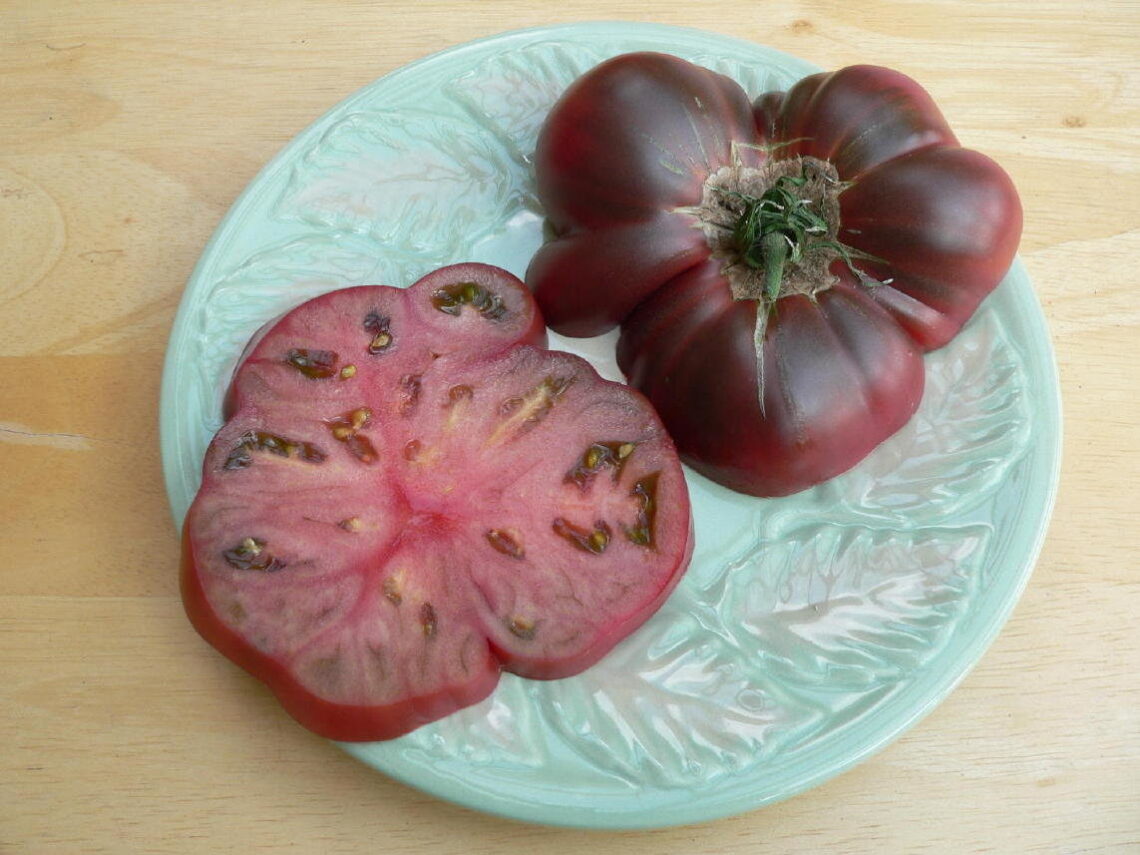I’ve been observing a most phenomenal thing: tomato seeds sprouting into wobbly seedlings that grow into baby tomato plants that grow into recognizable garden ready plants. Typically, I go to the nursery and I begin summer gardening by buying plants that are ready for the garden soil. But this year I decided to take a leap of faith and start with just a seed. Just a seed and a belief that in a few months I would have a harvest of beautiful Cherokee Purple heirloom tomatoes. I wanted home grown heirloom tomatoes . . . there is no substitute. Even if you don’t like tomatoes, keep reading. (It’s about process.)
If you start with a seed, you had best learn a few things about sprouting and seedlings or you will not make it to the good part – – the big, beautiful tomatoes! Information, process, and problem-solving are all part of successful gardening. Turns out there is a lot to know about tomatoes. I had to select seeds from over 10,000 different tomato choices! Every single seed has a history and a story – – thousands of stories if you ask other growers about their experiences with growing tomatoes. Different seeds have different germination times and become different looking plants that yield different sizes, colors, and tastes of tomatoes. Important things to know before you start.
Once you have selected a seed, there is a process to follow for seed sprouting and caring for seedlings. Decisions have to be made about when to start the sprouting. This mostly depends on outdoor temperatures and the frost free date for the area where you wish to plant them. A little “backwards math” counts you back to your indoor start date. Starting the sprouting takes the right combination of temperature, water, air, and light . . . more decision points to create just the right environment.
When the seeds sprout and shoot up you have something else, seedlings, and they require special care, too, regarding temperature and water. The first transplant happens at this stage so each seedling has it’s own small pot (usually peat). As the seedlings mature, the process of “hardening off” occurs which exposes the seedlings to more outdoor conditions before you actually put them in the ground. After a week or so, they are ready to move on to the in-ground transplanting.
When you place them outdoors, the location depends on sun exposure and soil preparation. The plants often grow 3-6 feet tall and need continuous water, sun, and air. Of course, you want to continue their development so fertilizer and support structures have to be provided. Outdoors, pests may become residents on your plants and that is yet another problem to be solved. If successful, after 70-90 days, your plant should be fruiting. Yes, tomatoes are a fruit!
Maybe you are wondering why a person wouldn’t just buy a tomato at the market. I think I just like the notion of taking the smallest start and working a process to fruition. It is a sort of biological miracle that a seed knows how to make delicious food if you follow a process and pay attention. I like the food but I love the process.
I grew up in a family of gardeners so I know where my love for gardening started. But I didn’t know nearly as much about how to fully engage in the process until I was a therapist. Movement recovery is a process and, thus, therapy must be process oriented. So much of good therapy is the same as good gardening. Know the “seed” (person) you are starting with. Start with an arsenal of information about your subject (the human movement system). Make good choices about growing conditions (therapy). Know when to move on (progression). Know how to deal with difficulties and the unexpected (problem-solving).
Between the start and the outcome, whether it is a seed in gardening or a new patient in your clinic, it is all process and problem solving. There is no substitute for process and problem-solving in neurorehabilitation just like there is no substitute for a vine-ripened, homegrown tomato. But if you like to start small, work a process, learn a ton along the way, and solve as many problems as you encounter, you probably could be great at neurorehabilitation . . . and gardening.
In therapy and in gardening – a small start, an act of believing, a process of doing (and doing and doing), and an expected but unknown (sometimes spectacular) outcome – you find all the elements of a leap of faith.


